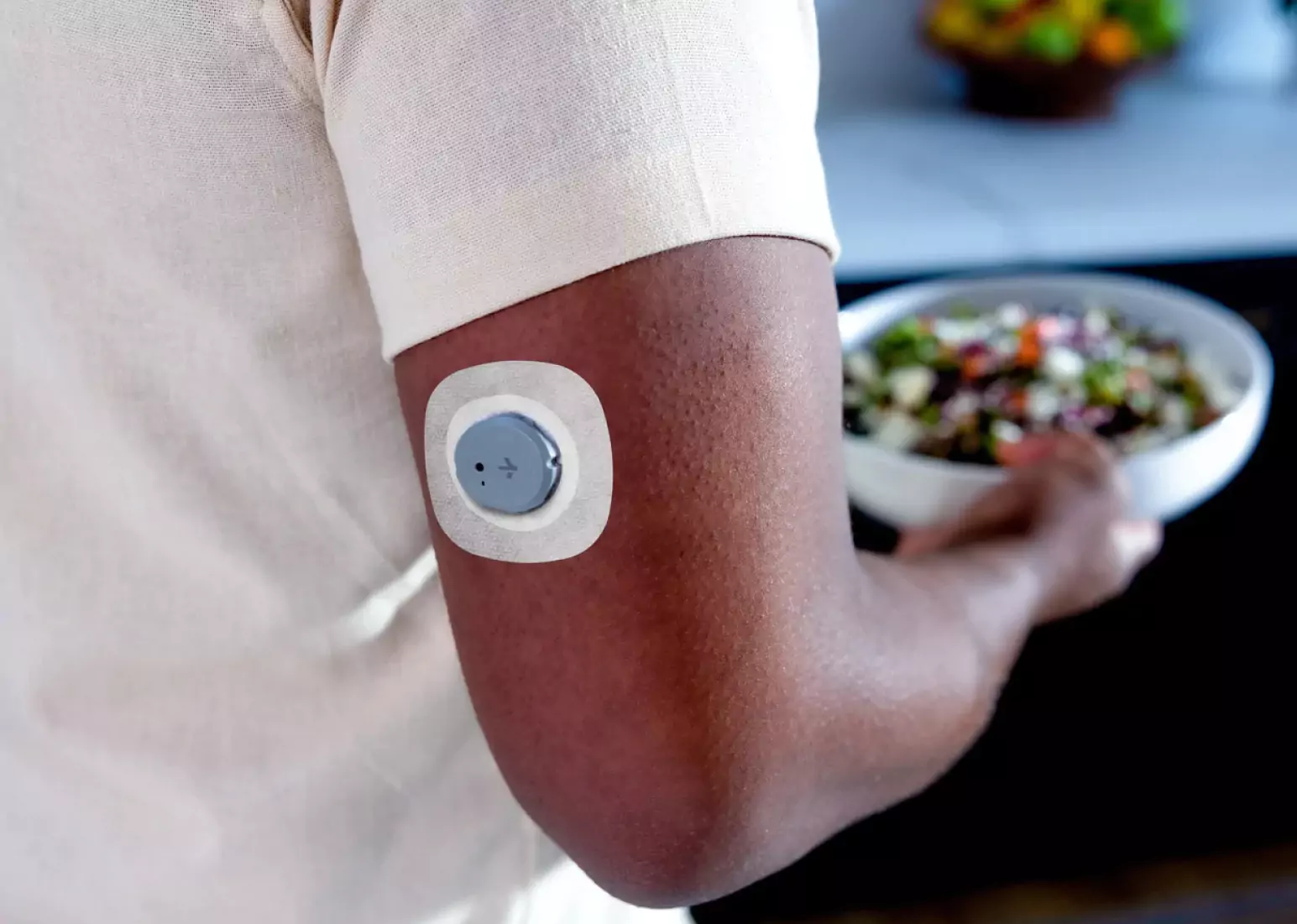Flying with a CGM: What You Need to Know

Key Takeways
It's that time of year again! That's right, the holidays are here, and with them come family gatherings, parties, events, and—our favorite—travel. You may be planning a trip to spend the holidays with your family or taking a much-needed vacation.
Unfortunately, no matter how well you plan your trip, there’s always a chance it’s going to be chaotic and stressful. And if you're trying to do it while managing healthcare devices, prescription medications, and diabetes supplies (yes, like the CGM!), it can be a little more complicated.
If you wear your CGM to optimize your health, you may consider removing it while you fly and putting on a new sensor once you reach your destination. But if you have diabetes, you likely rely on continuous glucose monitoring to manage your health every day.
Even if you're not diabetic, there are many reasons why you may prefer to keep your CGM on. For example, you may have just put on a new sensor, or your trip is too short to wear and remove a new one before flights to and from your destination.
Just the stress of traveling can affect your blood glucose levels, so why not find a way to keep your CGM on through it? Is it possible to do so? Absolutely! But before you fly, remember that there are some things you need to keep in mind.
Traveling with A Continuous Glucose Monitor (CGM)

Want to continue wearing your CGM on vacation? Wondering if your CGM can go through airport security, or if it has to be packed into your checked luggage? The good news is that flying with a CGM really isn't that complicated.
The Transportation Security Administration (TSA) has specific rules and requirements for air travel, including special procedures for people with diabetes. Remember that TSA agents and security officers assist people with diabetic devices like insulin pumps, insulin pens, syringes, and lancets all the time.
So they will likely help you out even if you're not totally up to speed. In fact, all you really need to do is follow the travel procedures set in place by the transportation and security in the country you're flying in and out of.
{{rich-text-cta-3="/style-guide"}}
Here are a few things you may want to keep in mind:
Keeping Your CGM Safe
The first thing you should know is that CGM devices may malfunction if they're exposed to X-ray machines or full-body scanners like the ones the TSA uses at most airports. A CGM will not set off a metal detectors, and will not be negatively impacted by a hand-wand scanner.
If you're wearing a CGM or carrying one in your luggage, inform the TSA so that they can arrange alternative security screening options for you. CGMs are safe to store in your carry-on bag, but you should avoid packing your sensors in your checked luggage.
If you're traveling internationally, you may want to check the type of body scanners that airports in other countries use, though they're likely the same or similar machines.
Preparing in Advance

Pack your boarding pass, your passport… and don’t forget your medication, prescriptions, and a doctor’s note! If you have diabetes, you can carry anything you need for diabetes care and management on your person. Still, getting a letter from your doctor may help expedite the screening process when you're speaking with a TSA agent.
If you're carrying other medical devices and diabetes supplies like insulin pumps, insulin delivery devices, syringes, or lancets, this can spare you from being at the receiving end of too many questions from security officers.
Your prescription will usually be enough to bypass these issues. Printing out a TSA notification card ahead of time can also help reduce any confusion or additional questions. When you arrive at the TSA checkpoint, you can simply hand it over to a TSA officer.
Flying with Children
It isn't necessary to have a doctor's note or a TSA notification card. But it can be a good solution if you don't like to draw attention to yourself or talk about your medical conditions. You can also call TSA Cares ahead of your travel date and inform them about your need for an alternative screening process.
This is especially important if you're traveling with a child who is wearing a CGM. Security checks and pat-downs for children have to be supervised, and it may save you some time at the airport if you call ahead. The process may differ in different countries, so check with local airports well in advance.
Tips to Manage Your Blood Sugar While Flying

Now that you know how to travel safely with your CGM, you may be wondering what you can do if you experience fluctuating blood glucose levels. So many things can weigh in to affect your blood sugar while you are on the move: changes in altitude, stress, eating food on the go, fatigue, atmospheric pressure, and more.
Diabetics often find their blood sugar rising when they're in the air. But, even for those who don't have diabetes, it can be helpful to prepare, just in case. Here's how to prepare so you can keep your blood glucose levels stable during your journey:
Eat Nutrient-Dense Foods
Do your best to plan for your day of travel. Think about how you would typically eat to maintain your blood glucose. Try to pack some healthy protein to eat instead of buying food on the go or at the airport.
It's much harder to regulate what you eat when you aren't in complete control of the preparation. Good grab-and-go options include nuts, hard-boiled eggs, protein boxes, and vegetables and dip, among others.
If you experience low blood sugar, you may want to keep a sugary snack with you and carry a hypoglycemia kit. Keep them on your person on the plane in case of turbulence.
This way, you'll have no trouble accessing them at any time. If you experience high blood sugar, it's a good idea to pack low carbohydrate, low sugar snacks to deal with hunger cravings in the air. Airlines usually have sugary and carbohydrate-heavy snacks, so be sure to bring your own or plan to pick something up on the go.
Keep Yourself Hydrated

Hydration is key to day-to-day blood sugar control, but this is even more important when you're flying. Flying can cause dehydration, which can lead to some difficulty breaking down sugar which will then lead to higher glucose values.
Make sure you always have a bottle of water on hand while you fly, and don't hesitate to ask a flight attendant for extra if you feel thirsty mid-air!
Stay Active in The Air
Did you know that sitting for too long when you're on a plane can cause blood clots? It's not a good idea to sit for hours at a time whether you're traveling or not. But during air travel, in particular, it's important to stretch your legs as often as possible.
If you're on a long flight, try to book an aisle seat, so it's easier to get up and take a little walk up and down the aisle. This will help regulate your blood sugar levels and keep you feeling good while you fly.
Consult With Your Doctor

This may not seem necessary, especially if you're wearing a CGM to optimize your health and don't have diabetes. But if you haven't traveled in a while or noticed changes in your glucose levels, it's helpful to discuss your travel plans with a doctor before you start packing.
They can often have helpful information and tips that you may not have thought of. It will also be helpful to request a copy of your prescriptions (and keep digital backups!) in case anything happens to them during your journey or at your destination, especially if you're traveling internationally.
Find the right Nutrisense programto turn insight into progress.
Go Beyond Glucose Data with Nutrisense
Your glucose can significantly impact how your body feels and functions. That’s why stable levels are an important factor in supporting overall wellbeing. But viewing glucose isn't enough. Nutrisense, you’ll be able to learn how to use your body's data to make informed lifestyle choices that support healthy living.
One-to-one coaching
Sign up to access insurance-covered video calls to work with a glucose expert: a personal registered dietitian or certified nutritionist who will help tailor your lifestyle and diet to your goals.
Monitor and measure what matters
With the Nutrisense CGM Program, you can monitor your glucose with health tech like glucose biosensors and continuous glucose monitor (CGM)s, and analyze the trends over time with the Nutrisense App. This will help you make the most informed choices about the foods you consume and their impact on your health.
Find your best fit
Ready to take the first step? Start with our quiz to find the right Nutrisense program to help you take control.

Kara Collier is a registered dietitian nutritionist and certified nutrition support clinician who is passionate about reshaping how we approach prevention, behavior change, and metabolic health. A Forbes 30 Under 30 honoree, she’s helped over 150,000 people improve their metabolic health using tools like continuous glucose monitors and behavior-focused nutrition strategies. Kara has been featured by Forbes, UC Berkeley, and HLTH, and has appeared on top podcasts like Mind Pump and The Genius Life.



.png)
